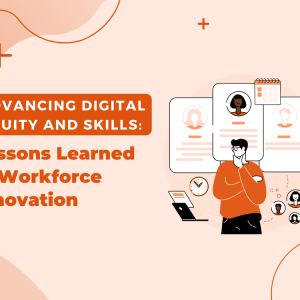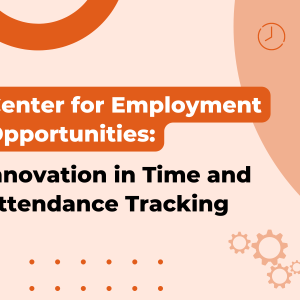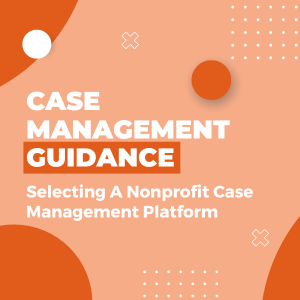Unlocking Human Potential: Maximizing the Impact of Nonprofit Workforce Development Initiatives
The problem of unemployment in America is a complex and multi-faceted issue that affects millions of people. According to the Bureau of Labor Statistics, there are 5.7 million unemployed Americans.
High unemployment rates can lead to a number of other issues, including increased poverty and social welfare costs, a decline in consumer spending, and reduced economic growth. Some of the key factors contributing to unemployment in America include automation, globalization, and the decline of certain industries. Additionally, some groups, such as people of color and those with low levels of education, face systemic barriers to finding employment.
Nonprofits play an essential role in addressing the problem of unemployment through their workforce development initiatives.
But what is workforce development and what do workforce development activities entail?
This article explains everything you need to know about workforce development─the importance of setting up workforce development initiatives, the benefits, and more.
What Are Workforce Development Programs?
Workforce development programs are designed to prepare individuals for employment and help them acquire the skills needed to succeed in the workforce. These programs can be offered by government agencies, nonprofit organizations, or educational institutions and are often focused on specific industries or skill sets.
The goal of workforce development programs is to help individuals improve their employment prospects and attain long-term career stability.
Some common elements of workforce development programs include:
- Job training: Classes and workshops that teach specific skills related to a particular industry or job.
- Career counseling and support: Assistance with identifying career goals, developing a career plan, and navigating the job search process.
- Work placement and internships: Opportunities for individuals to gain hands-on experience and build their resumes through work placement or internship programs.
- Continuing education: Classes and training programs that help individuals acquire new skills and keep up with changes in the workforce.
- Support services: Assistance with transportation, child care, and other needs that may impact an individual’s ability to participate in workforce development programs or secure and maintain employment.
Workforce development programs can be tailored to meet the needs of specific populations, such as youth, displaced workers, veterans, or individuals with disabilities. By providing individuals with the skills and support they need to succeed in the workforce, workforce development programs can help build strong, stable communities and a thriving economy.
Examples of Workforce Development Programs
There are many examples of workforce development initiatives from nonprofits that aim to improve the lives of underrepresented individuals and communities. Here are a few of them:
1. Goodwill Industries International
Goodwill provides job training and employment services for individuals with disabilities and other barriers to employment. They also offer career development and financial literacy programs, as well as job placement services.
2. Year Up
Year Up is a one-year, intensive training program that provides low-income young adults with technical and professional skills, as well as internships and job placement services.
3. Junior Achievement
Junior Achievement is a global nonprofit organization that provides youth with financial literacy, work readiness, and entrepreneurship education. They offer a variety of programs for students of all ages, including in-school programs, after-school programs, and summer camps.
4. National Able Network
National Able Network is a nonprofit organization that provides job training and career services for individuals with disabilities and other barriers to employment. They offer job placement assistance, skills training, and career development programs.
5. TechSoup
TechSoup is a nonprofit organization that provides technology resources and support to other nonprofit organizations. They offer training and education programs on a wide range of technology-related topics, including website development, data management, and digital marketing.
These are just a few examples of the many nonprofit organizations that are working to provide workforce development initiatives and help people improve their lives through education and job training.
The Importance Of Setting Up Workforce Development Initiatives
Workforce development is a win-win for everyone involved, including the nonprofit agency, employers, and employees. The employer gains skilled workers, and the employees are provided with a source of income and a path toward career progression. And let’s not forget the nonprofit organizations themselves. They are able to achieve their workforce development goals and fulfill their mission of driving positive change.
Let’s take a look at some other benefits of carrying out workforce development activities:
1. Addressing Skills Gaps And Labor Shortages
Workforce development initiatives can help address the skills gaps and labor shortages in local communities. They do this by providing training and education programs to help individuals acquire the skills and knowledge they need to succeed in the workforce.
2. Improving Economic Stability
By providing job training and placement services, nonprofits can help individuals achieve greater economic stability and reduce poverty in their communities.
3. Promoting Social Inclusion
Individuals from disadvantaged backgrounds gain the skills and experience they need to participate fully in the workforce and in their communities. This includes people with disabilities, low-income families, and minorities.
4. Fostering Community Development
Nonprofit workforce development initiatives can help build strong, vibrant communities by providing employment opportunities and supporting local economic growth.
How To Implement A Workforce Development Program
To effectively implement a workforce development program, you need a strategy. Here are some important things to consider when setting up workforce development initiatives in your nonprofit organizations.
1. Build The Right Relationships
Building sustainable, long-term partnerships with employers is critical to the success of workforce development initiatives. Collaboration between community groups, educational institutions, and businesses is necessary to address the challenge of matching job openings with job seekers.
2. Assess The Needs Of Your Clients
Apart from building relationships with employers, you also need to make sure you fully understand the specific needs of the client. This means taking into account several factors when assessing their needs like:
- Background information: their personal history, family situation, education, and employment history.
- Health and wellbeing: their physical and mental health, including any medical conditions or disabilities that may impact their daily life. They should also consider the client’s access to healthcare and any support they may need to maintain their health.
- Housing and living conditions: their living conditions, including their housing situation, access to basic necessities like food, water, and electricity, and the safety and security of their living environment.
- Education and employment: their level of education and employment status, including any training or skill development they may need to improve their job prospects.
- Social support: their social network and relationships, including any family members or friends who can provide support and assistance.
3. Provide Wrap-Around Services
Wrap-around services in a workforce development program are a set of support services that are provided to program participants in addition to job training and placement assistance. The goal of wrap-around services is to provide a comprehensive and integrated approach to workforce development. These services address the various challenges that individuals may face and support them in achieving their career goals.
Examples of these services include:
- Child care assistance
- Transportation assistance
- Housing assistance
- Health and wellness services
- Financial education and counseling
- Legal services
- Mentoring and coaching
4. Use The Right Workforce Development Solution
The right workforce development techniques will only take you so far. Apart from a stellar group of individuals, your team also needs a workforce development solution that supports their initiatives and hard work. Nonprofits in the workforce development sector need a data management solution to track and manage client data and progress to improve outcomes, comply with reporting requirements, be able to manage complex employer relationships and demonstrate their impact to funders. The right-fit workforce development data management solution can manage funder requests, streamline employer relationships, and optimize program delivery, ultimately leading to more effective and efficient workforce development programs.
How Exponent Case Management Can Help With Workforce Development
Does your nonprofit organization need help to get its workforce development program off the ground?
Exponent Case Management offers nonprofits powerful technology solutions that help them provide life-changing programs and services. Our innovative Workforce Development Module supports your team at every stage of implementing your program, from intake and skills assessment to tracking each participant’s progress from job coaching to placement and retention.
We help you understand each individual’s journey and ensure the right services are being provided at the right time. And with the right services, your nonprofit’s workforce development program can play a key role in promoting economic growth, social inclusion, and community development.
Get in touch with us today to learn more about how we can help.




